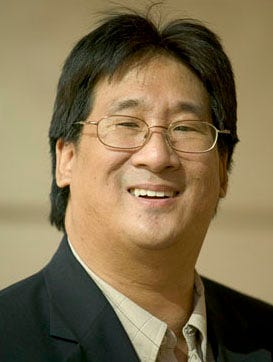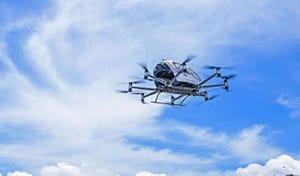What Do You Think Is the IoT’s Biggest Potential?
We put that question to our audience and ended up with a wide variety of responses.
August 10, 2016

The Internet of Things Institute is launching an interview series dedicated to exploring the potential of the technology while being candid about challenges related to the technology. If you are interested, feel free to contribute online. Here is a summary of answers related to the greatest potential benefits of the Internet of Things:
Connecting Nearly Everything
 Jon Penney, Chief Security Officer at Device Authority: Connected healthcare, connected cars, smart factories… the list goes on.
Jon Penney, Chief Security Officer at Device Authority: Connected healthcare, connected cars, smart factories… the list goes on.
Making Manufacturing Smarter
Glenn Graney, Senior Marketing Manager, QAD, Inc.: Manufacturers universally want clearer and more uniform visibility into the live status of their production environments.
Predictive Maintenance
 Brian Chee, IT Specialist, University of Hawaii SOEST: More proactive maintenance of critical systems. I think the very best illustration is how Shidler elevators are using IoT to automatically order parts and service for elevators truly illustrates how IoT can be used to increase system reliability, health, and safety. We should be able to better predict potential failures before services are impacted.
Brian Chee, IT Specialist, University of Hawaii SOEST: More proactive maintenance of critical systems. I think the very best illustration is how Shidler elevators are using IoT to automatically order parts and service for elevators truly illustrates how IoT can be used to increase system reliability, health, and safety. We should be able to better predict potential failures before services are impacted.
Cost Savings through Connectivity
Linda Serges, Global Marketing Manager, IoT and Software, Intertek: IoT solutions for industrial, buildings, cities. These are areas where a true cost savings in energy can be shown as opposed to purely for convenience.
Endless Possibilities
 Don DeLoach, President and CEO, Infobright: The potential implications for the Internet of Things are endless across many industries. As examples, smart parking where sensors are used to monitor when parking spots are free; waste management where sensors in the city trash receptacles detect when they are near full, informing city services when they need to be picked up; and audience profiling for online advertising where IoT data could generate a much higher quality profile, which would lead directly to more money. However, there is one particular area that is starting to pick up steam in the realm of IoT, and I don’t see it slowing down anytime soon — Augmented Reality (AR). The vast repositories of data will enable an AR lens into the scenarios in ways that provide near immediate insight at a level of depth unimaginable previously. If you think about all the data points you get from IoT, it is easy to envision building up a historical repository of data including things like street traffic, pedestrian traffic, weather conditions, traffic incident data, building data, and much more. All of this data can then feed augmented reality apps for allowing you to envision and “engage” in hypothetical situations. Take for example emergency responders. They might plug certain variables into an incident as it is unfolding to “see” the prediction of what will happen. This will enable first responders to visualize where the crowds will go, how the flood will expand, where the fire might move and which people and/or facilities would be impacted, likely saving many lives.
Don DeLoach, President and CEO, Infobright: The potential implications for the Internet of Things are endless across many industries. As examples, smart parking where sensors are used to monitor when parking spots are free; waste management where sensors in the city trash receptacles detect when they are near full, informing city services when they need to be picked up; and audience profiling for online advertising where IoT data could generate a much higher quality profile, which would lead directly to more money. However, there is one particular area that is starting to pick up steam in the realm of IoT, and I don’t see it slowing down anytime soon — Augmented Reality (AR). The vast repositories of data will enable an AR lens into the scenarios in ways that provide near immediate insight at a level of depth unimaginable previously. If you think about all the data points you get from IoT, it is easy to envision building up a historical repository of data including things like street traffic, pedestrian traffic, weather conditions, traffic incident data, building data, and much more. All of this data can then feed augmented reality apps for allowing you to envision and “engage” in hypothetical situations. Take for example emergency responders. They might plug certain variables into an incident as it is unfolding to “see” the prediction of what will happen. This will enable first responders to visualize where the crowds will go, how the flood will expand, where the fire might move and which people and/or facilities would be impacted, likely saving many lives.
Synergies between Connected Devices
Stephen H. Haliczer, Special Assistant to the Vice-President for Information Technology, Northern Illinois University: Interconnectivity combined with universality. Devices, machines, and people all connected will make for brilliant and heretofore impossible synergies. One example might be sensors on certain machinery detecting small amounts of pollution derived from the machine’s operation. Checking the health-related data transmitted by smartwatches or smart clothing of workers at the plant could reveal a health hazard from this hitherto unknown source. Another example could be the use of virtual reality experiences to enhance human brain functioning to help students with learning disorders. Subjects could access such VR materials over the web and use them over and over again to gain the maximum neuroplasticity effect.
Cutting Down on Manual Data Collection
 Josh Garrett, Co-Founder and Chief Strategy Officer, MOBI: The enormous amount of data that can now be obtained electronically versus manually will be revolutionary. Taking that data and making real-time business decisions that can directly impact top-line revenue or bottom line profitability will be transformational to enterprises. Logistical, operational, safety, financial and other data will be much more readily available and analyzable.
Josh Garrett, Co-Founder and Chief Strategy Officer, MOBI: The enormous amount of data that can now be obtained electronically versus manually will be revolutionary. Taking that data and making real-time business decisions that can directly impact top-line revenue or bottom line profitability will be transformational to enterprises. Logistical, operational, safety, financial and other data will be much more readily available and analyzable.
Replacing Humans with Thinking Machines
Benjamin Forgan, CEO, Hologram.io: Massive automation and process optimization; replacing humans with thinking machines.
Finally Enabling Real-Time Automation
 Kevin Walsh, Vice President Marketing, Bsquare: The biggest potential associated with IoT is the ability to apply advanced data analytics, holistic rule processing, and automated process orchestration in industrial settings so that real-time automation can finally be achieved. Most IoT experiments to date have largely been focused on data extraction and data visualization. While these are necessary initial steps, they do not deliver the benefits businesses are looking for in IoT initiatives. To fully realize IoT’s potential, data analytics and automated orchestration of actions and processes need to be added to the IoT system. By doing so, businesses move toward complete IoT systems–data extraction and monitoring coupled with applied analytics and orchestration resulting in completely automated, highly accurate, self-adjusting IoT systems.
Kevin Walsh, Vice President Marketing, Bsquare: The biggest potential associated with IoT is the ability to apply advanced data analytics, holistic rule processing, and automated process orchestration in industrial settings so that real-time automation can finally be achieved. Most IoT experiments to date have largely been focused on data extraction and data visualization. While these are necessary initial steps, they do not deliver the benefits businesses are looking for in IoT initiatives. To fully realize IoT’s potential, data analytics and automated orchestration of actions and processes need to be added to the IoT system. By doing so, businesses move toward complete IoT systems–data extraction and monitoring coupled with applied analytics and orchestration resulting in completely automated, highly accurate, self-adjusting IoT systems.
Boosting Business IQ with Connected Sensors
Ben Strahan, Head of Developer Relations, Hologram.io: Micro and wireless sensors in a commercial setting communicating with the cloud through a local mesh network through an IoT gateway.
Creating a Unified Data Model
 Binu Panicker, Vice President, Technology, Covisint: Covisint clearly envisions a connected world where it is possible to connect, aggregate, analyze and share valuable information (which was not possible at scale) across disparate devices, technologies, and frameworks. The concept of a unified data model and removing implementation complexity through an agnostic-platform will define the winning strategy. The potential is huge from a multi-dimensional perspective that everything humans do to improve quality of life, comfort and standards will have a direct impact in deriving intelligence and making things smarter. The ability to interact and manage business and life with intelligent systems will become possible with IoT.
Binu Panicker, Vice President, Technology, Covisint: Covisint clearly envisions a connected world where it is possible to connect, aggregate, analyze and share valuable information (which was not possible at scale) across disparate devices, technologies, and frameworks. The concept of a unified data model and removing implementation complexity through an agnostic-platform will define the winning strategy. The potential is huge from a multi-dimensional perspective that everything humans do to improve quality of life, comfort and standards will have a direct impact in deriving intelligence and making things smarter. The ability to interact and manage business and life with intelligent systems will become possible with IoT.
About the Author
You May Also Like






